Oct 20 to Oct 26
After a day of fighting, the Japanese Army’s Second Division was resting when a curious delegation of two Scotsmen and 19 Taiwanese approached their camp.
It was Oct. 20, 1895, and the troops had reached Taiye Village (太爺庄) in today’s Hunei District (湖內), Kaohsiung, just 10km away from their final target of Tainan.
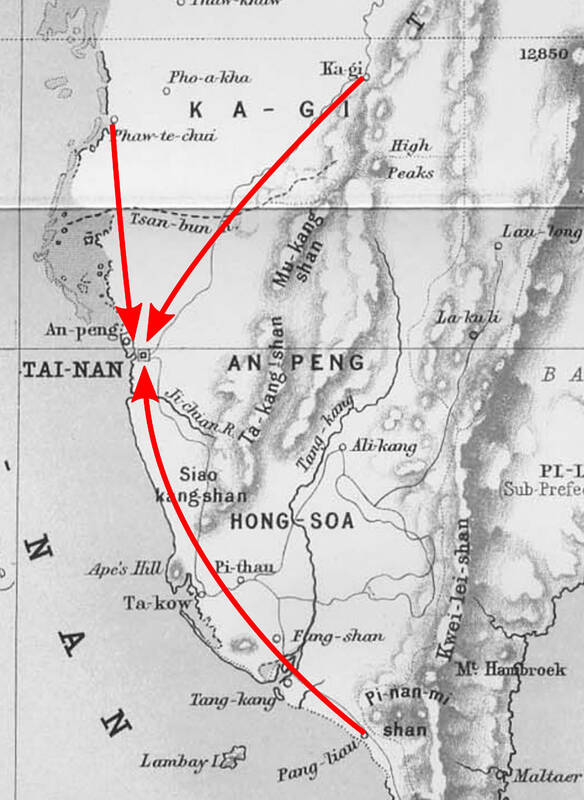
Graphic: Han Cheung
Led by Presbyterian missionaries Thomas Barclay and Duncan Ferguson, the group informed the Japanese that resistance leader Liu Yung-fu (劉永福) had fled to China the previous night, leaving his Black Flag Army fighters behind and the city in chaos. On behalf of the local gentry, they asked the Japanese to enter peacefully to restore order and prevent further bloodshed.
Around 6:30am the following morning, Major General Motomi Yamaguchi led a contingent of Japanese troops toward the city, accompanied by the missionary delegation. The Japanese were suspicious, but as promised, they entered from the South Gate without firing a shot.
Next week marks the 130th anniversary of the city’s capitulation, and although unrest continued in various regions, the Japanese regarded Taiwan (at least its western half) as “pacified.” Cheng Tao-tsung’s (鄭道聰) new book Taiwan Becomes a Foreign Land, Japanese Don’t Wear Queues (台灣變番邦 日本無頭鬃) details the more than 40 skirmishes fought between Oct. 10 and Oct. 21, a period often overlooked when discussing this war.
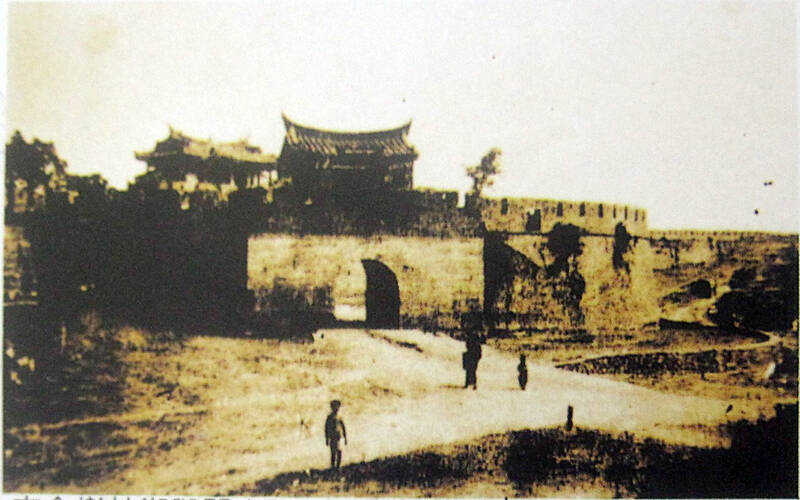
Photo courtesy of Wikimedia Commons
REPUBLIC OF FORMOSA
Earlier this year, “Taiwan in Time” ran a four-part series on the Hakka resistance against the Japanese advance — first in northern and central Taiwan, then in Pingtung after the fall of Tainan. They were often supported by Liu’s Black Flag Army, which was based in Tainan. According to legend, Hakka militia leader Hsu Hsiang (徐驤) fought all the way from Hsinchu to northern Tainan, making his last stand at the Tsengwen River (曾文溪) on Oct. 20 (see “Taiwan in Time: The last Hakka musketeer,” June 29, 2025.
Liu and his troops first arrived in Taiwan in 1894 during the First Sino-Japanese War, which concluded with the Qing Empire ceding the island to Japan. Qing officials and local elites declared the Republic of Formosa in response, hoping to prevent Japanese occupation. They recruited Liu, and tasked him with defending Tainan.
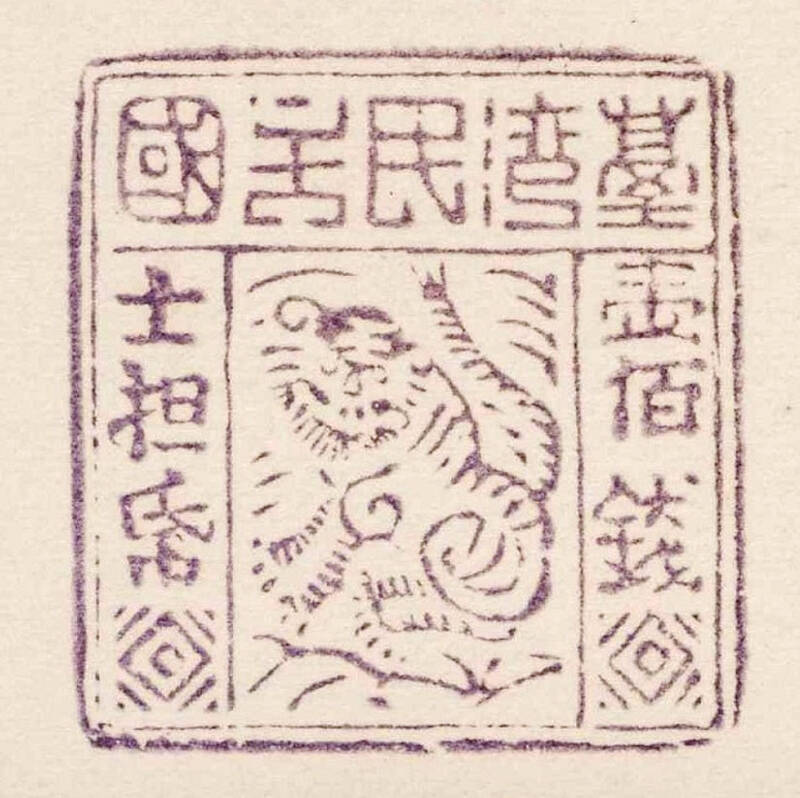
Photo courtesy of National Museum of Taiwan History
The Japanese landed in Keelung on May 29, 1895, and the republic’s president Tang Ching-sung (唐景崧) soon fled to China. Although Liu declined the presidency, he effectively became the republic’s de facto leader by late June.
As the Japanese pushed their way south, Liu repeatedly asked Qing official Zhang Zhidong (張之洞) for reinforcements — to no avail. In August, Liu began issuing stamps and banknotes in Tainan under the name of the Republic of Formosa.
In late September, local militias and the Black Flags launched one final offensive northward, assaulting Japanese-occupied Changhua. After suffering heavy casualties and exhausting their ammunition, they could only fall back to a defensive position.
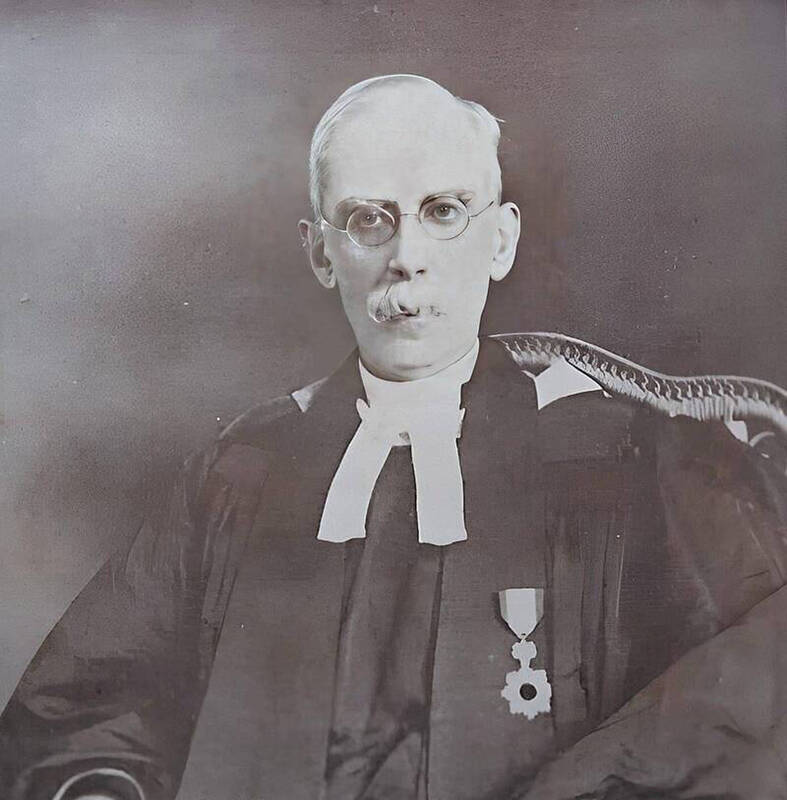
Photo courtesy of Wikimedia Commons
VALIANT LOCAL MILITIAS
Liu instructed the Black Flags to guard the major ports, while local leaders raised troops to defend the river crossings and main roads. According to Cheng, this effort involved about 12,000 Black Flag soldiers and 8,000 Taiwanese fighters.
Meanwhile, the Japanese decided on a three-pronged attack of Tainan. Prince Kitashirakawa Yoshihisa’s Imperial Guards Division, which had been the main invasion force since May, would continue its advance. The Fourth Mixed Brigade, under Prince Fushimi Sadanaru, was to land at Budai Port (布袋) in Chiayi, while Lieutenant General Nogi’s Second Division would land in Pingtung’s Fangliao (枋寮) and strike from the south. They totalled about 37,000 troops.
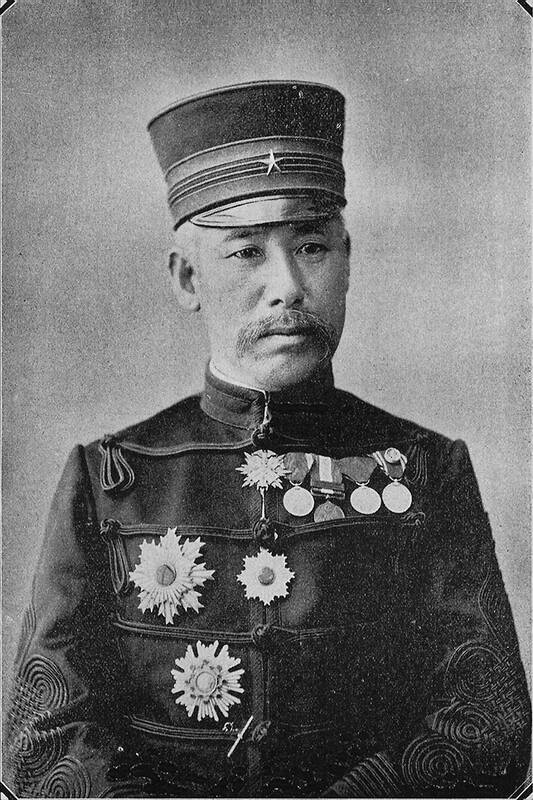
Photo courtesy of Wikimedia Commons
On Oct. 11, the 12,000-strong Fourth Mixed Brigade completed its landing in Budai and headed toward Yanshuei (鹽水). A regiment of the Imperial Guards arrived first, driving off about 200 local fighters. They spent the night there before occupying Sinying (新營) the following day.
Over the next few days, the different regiments were repeatedly ambushed by the militias, who often surrounded them from all directions using the Songjiang Battle Array (宋江陣), a traditional formation accompanied by drums and gongs. After each assault, the fighters retreated into the brush. Although they managed to inflict casualties, they eventually succumbed to superior firepower.
Starting on Oct. 14, the Japanese began brutal punitive campaigns against the villages suspected of harboring fighters. Bloody battles broke out across today’s Beimen (北門), Jiali (佳里) and Shanhua (善化) districts, leaving countless dead. Many temples in the area commemorate those who fell during the fighting.

Photo courtesy of Wikimedia Commons
TAINAN SURRENDERS
By early October, the Black Flag Army’s discipline had collapsed, often fleeing at the sight of the Japanese and leaving their cannons to local militias. Some even returned to Tainan to harass wealthy residents, many of whom fled to the countryside or to China.
A popular song described this situation: “Imperial envoy Liu’s plans failed to work, the flies have turned into bees, and the worms have turned into centipedes. The mansions are now empty, Taiwan is now a foreign land, and Japanese don’t wear queues.”
After several unsuccessful attempts to sue for peace, Liu fled to China on Oct. 19.
Meanwhile, Nogi’s Second Division fought their way north from Fangliao. After encountering unexpected resistance from the Hakkas (see “Taiwan in Time: Taiwan in Time: Burning the Hakka resistance to the ground,” July 6, 2025), they captured Fengshan (鳳山).
The Black Flags along this route were more active. On the morning of Oct. 20, the Japanese clashed with several hundred of them by the Ertsenghang River (二層行溪) and camped that night at Taiye Village. This is when the missionary delegation approached.
Barclay and Ferguson’s colleague William Campbell was not in Tainan at that time, but he details the surrender in Sketches From Formosa: “Hundreds of gentry came forward bowing their heads to the ground, and in a minute more the flag of the rising sun was waving over the city.”
A Japanese embedded reporter noted in Observations from the Taiwan Campaign that as the Japanese entered Tainan, residents stood in front of their homes, displaying a white flag signifying their submission to the Japanese Empire.
The Japanese then dispatched troops to Anping Fort, killing more than 50 Black Flags and capturing between 4,000 and 7,000, who were soon deported back to China. On Nov. 13, the Imperial Guard Division headed back to Japan, sans Prince Yoshihisa who died on Oct. 28 presumably of illness.
Nogi took charge of the defense of southern Taiwan, and on Nov. 18, governor-general Kabayama Sukenori officially declared the island “pacified.”
Taiwan in Time, a column about Taiwan’s history that is published every Sunday, spotlights important or interesting events around the nation that either have anniversaries this week or are tied to current events.

Seven hundred job applications. One interview. Marco Mascaro arrived in Taiwan last year with a PhD in engineering physics and years of experience at a European research center. He thought his Gold Card would guarantee him a foothold in Taiwan’s job market. “It’s marketed as if Taiwan really needs you,” the 33-year-old Italian says. “The reality is that companies here don’t really need us.” The Employment Gold Card was designed to fix Taiwan’s labor shortage by offering foreign professionals a combined resident visa and open work permit valid for three years. But for many, like Mascaro, the welcome mat ends at the door. A

Last week gave us the droll little comedy of People’s Republic of China’s (PRC) consul general in Osaka posting a threat on X in response to Japanese Prime Minister Sanae Takaichi saying to the Diet that a Chinese attack on Taiwan may be an “existential threat” to Japan. That would allow Japanese Self Defence Forces to respond militarily. The PRC representative then said that if a “filthy neck sticks itself in uninvited, we will cut it off without a moment’s hesitation. Are you prepared for that?” This was widely, and probably deliberately, construed as a threat to behead Takaichi, though it

Nov. 17 to Nov. 23 When Kanori Ino surveyed Taipei’s Indigenous settlements in 1896, he found a culture that was fading. Although there was still a “clear line of distinction” between the Ketagalan people and the neighboring Han settlers that had been arriving over the previous 200 years, the former had largely adopted the customs and language of the latter. “Fortunately, some elders still remember their past customs and language. But if we do not hurry and record them now, future researchers will have nothing left but to weep amid the ruins of Indigenous settlements,” he wrote in the Journal of

If China attacks, will Taiwanese be willing to fight? Analysts of certain types obsess over questions like this, especially military analysts and those with an ax to grind as to whether Taiwan is worth defending, or should be cut loose to appease Beijing. Fellow columnist Michael Turton in “Notes from Central Taiwan: Willing to fight for the homeland” (Nov. 6, page 12) provides a superb analysis of this topic, how it is used and manipulated to political ends and what the underlying data shows. The problem is that most analysis is centered around polling data, which as Turton observes, “many of these